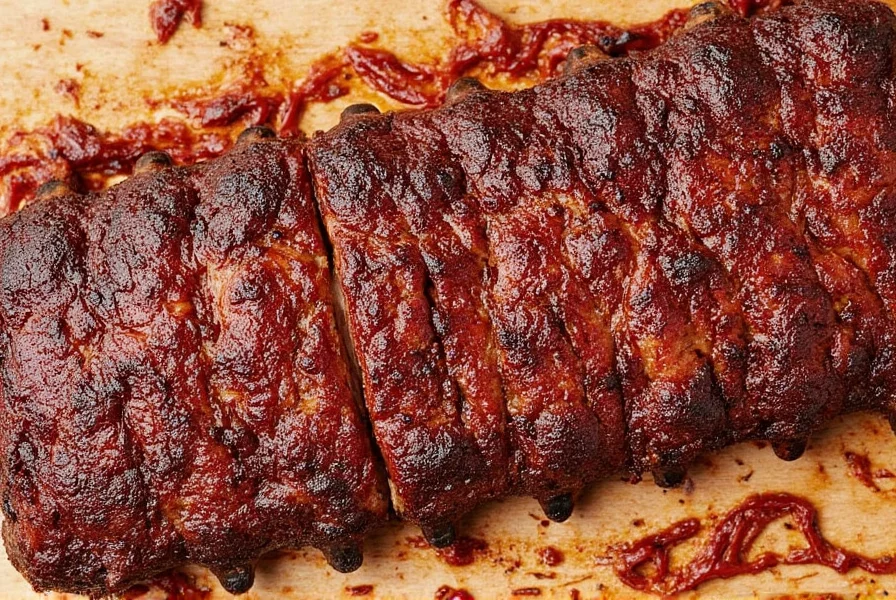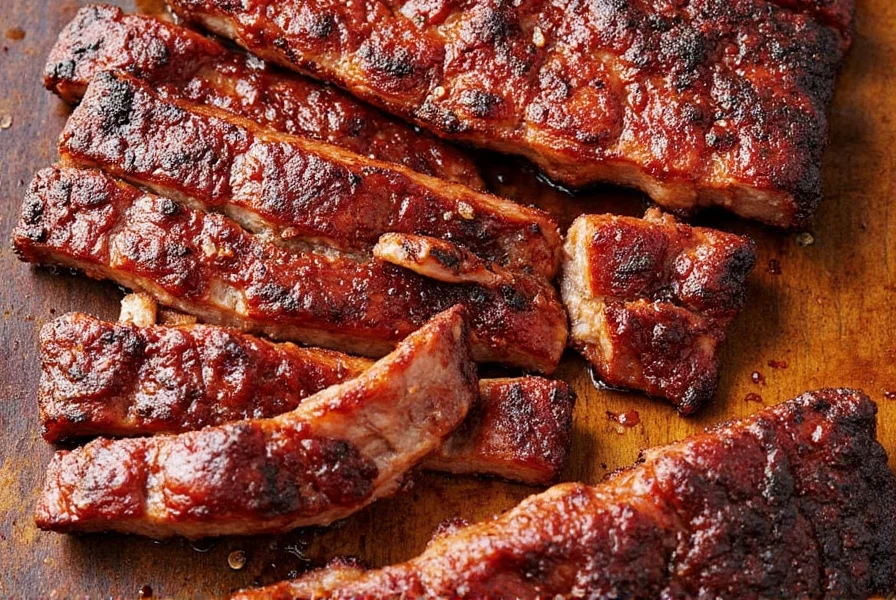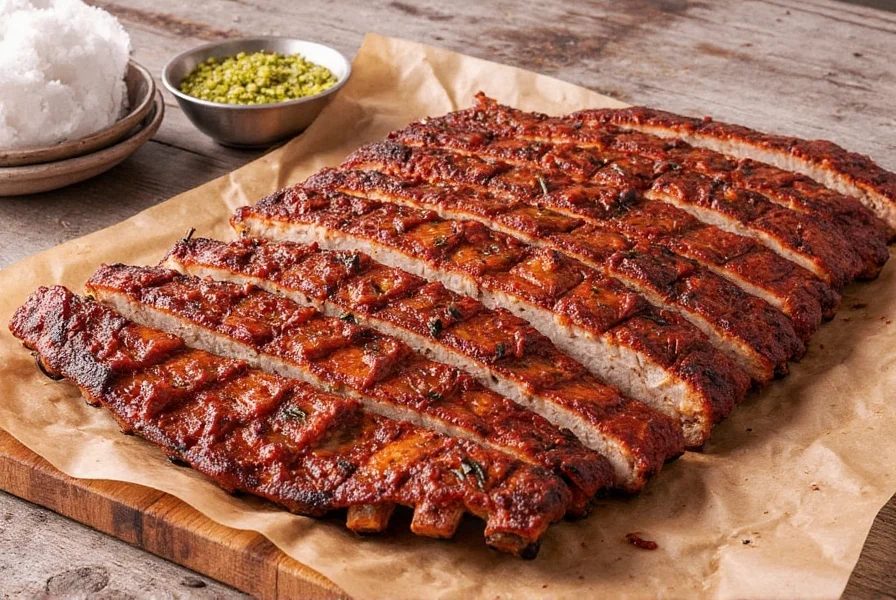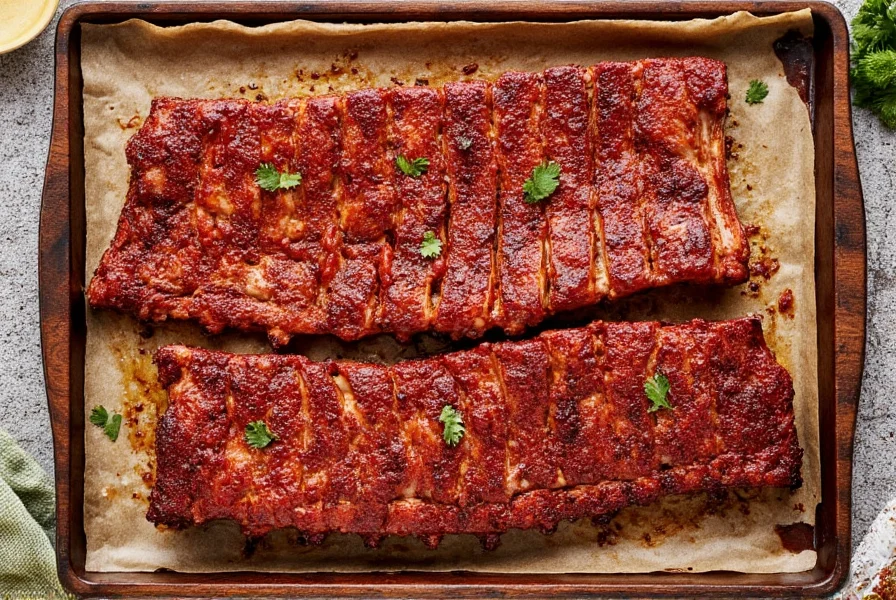Table of Contents
Introduction
Pork ribs come in several distinct types, each with unique characteristics that affect flavor, texture, and cooking methods. Understanding these differences is essential for selecting the right cut for your dish. This guide explains the key types of pork ribs, their ideal cooking applications, and how to choose the best option for your needs—without unnecessary spice details that distract from core rib selection criteria.

Types of Pork Ribs: A Flavor Breakdown
Each pork rib type has specific traits that determine its best use in cooking. Here’s a clear comparison:
| Rib Type | Description | Best Cooking Method |
|---|---|---|
| Spare Ribs | Larger, meatier, with higher fat content. Ideal for slow-cooking techniques. | Smoking, braising, low-and-slow barbecue |
| Baby Back Ribs | Smaller, leaner, and more tender. Cooks faster than spare ribs. | Grilling, baking, quick roasting |
| St. Louis Ribs | Trimmed spare ribs with uniform shape. Balanced fat and meat ratio. | Barbecue, oven roasting, sauce-heavy dishes |
| Country Ribs | Thicker cuts from the shoulder area. Rich, meaty texture with more connective tissue. | Slow cooking, stewing, braising |

Cooking Tips for Perfectly Spiced Ribs
While rib type is foundational, proper cooking techniques ensure optimal results. Key tips include:
- Marinate for Flavor Penetration: Allow ribs to sit in seasoning for at least 2 hours (or overnight) to maximize taste absorption.
- Use Indirect Heat for Smoking: Place ribs away from direct flame to prevent burning while achieving smoky flavor.
- Baste During Final Cooking Phase: Apply sauce only in the last 10–15 minutes to avoid sugar burning.
- Rest Before Serving: Let ribs rest for 5–10 minutes after cooking to redistribute juices.
For spice selection: While specific spice blends depend on personal preference, the rib type determines how spices interact with the meat. For example, spare ribs’ fat content holds bold spices better, while baby backs benefit from lighter seasoning.
Buying Guide: Choosing the Best Pork Ribs for Your Cooking Style
Select ribs based on your cooking method and desired outcome:
For Slow Cooking or Smoking
Choose spareribs or country ribs. Their higher fat content and connective tissue break down during long cooking, resulting in tender, flavorful meat. Look for even marbling and a pinkish-red color.

For Quick Grilling or Baking
Opt for baby back ribs or St. Louis ribs. These leaner cuts cook faster and maintain tenderness under high heat. Avoid excessive moisture in packaging, which indicates older meat.

Conclusion
Understanding pork rib types is the first step to mastering any dish. Whether you’re smoking spare ribs for a rich, fall-off-the-bone texture or grilling baby backs for a quick meal, selecting the right cut ensures perfect results every time. Focus on matching the rib type to your cooking method—this foundation makes spice selection and technique far more effective.

Frequently Asked Questions
What are the main types of pork ribs available?
The four main types are spare ribs, baby back ribs, St. Louis ribs, and country ribs. Spare ribs are larger and fattier, baby backs are smaller and leaner, St. Louis ribs are trimmed spare ribs with uniform shape, and country ribs are thicker cuts from the shoulder area.
What’s the difference between baby back ribs and spare ribs?
Baby back ribs come from the top of the rib cage near the spine and are smaller, leaner, and cook faster. Spare ribs come from the belly area, are larger and meatier with more fat, and require longer cooking times for tenderness.
Which type of pork ribs is best for grilling?
Baby back ribs or St. Louis ribs are best for grilling due to their leaner structure and faster cooking time. Use indirect heat to prevent burning and ensure even cooking.
How do I choose the right pork ribs for BBQ?
For traditional BBQ, spare ribs or St. Louis ribs are ideal because their fat content withstands long smoking times. Look for even marbling, firm bones, and pinkish-red meat. Avoid packages with excess liquid, which indicates older meat.
Are St. Louis ribs the same as spare ribs?
St. Louis ribs are a trimmed version of spare ribs. Butchers remove the sternum bone, cartilage, and excess fat to create a uniform rectangular shape that cooks more evenly. They share the same rich flavor as spare ribs but with better presentation.
What’s the most tender type of pork ribs?
Baby back ribs are generally the most tender due to their lean composition and location near the spine. They require less cooking time and are ideal for those preferring a delicate texture.










 浙公网安备
33010002000092号
浙公网安备
33010002000092号 浙B2-20120091-4
浙B2-20120091-4